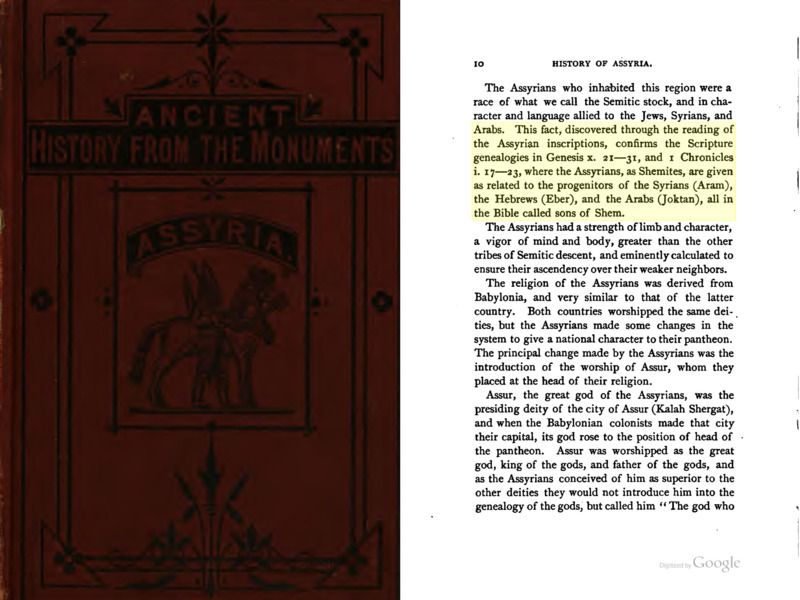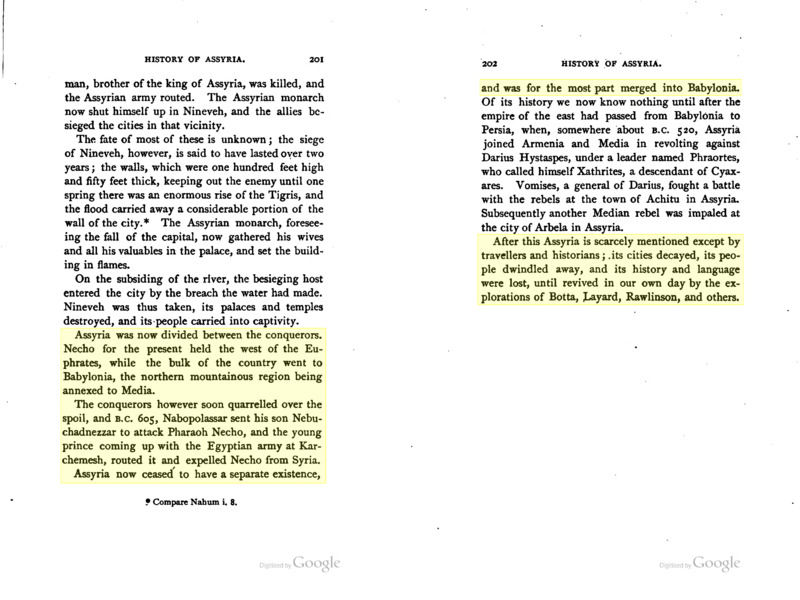-
Title
-
Assyria from the Earliest Times to the Fall of Nineveh
-
Creator
-
George Smith
-
Date
-
1876
-
Description
-
Smith traces Assyrian history from its beginnings to Nineveh’s fall in 612 BCE. Smith presents the Assyrians as a Semitic people in character and language, related to “the Jews, Syrians, and Arabs.” He stresses that Assyrian religion grew out of Babylonian religion, with the distinctive change of placing the city-god Assur at the head of the pantheon. In his narrative the empire’s rise rests on military vigor and centralized kingship under Assur.
For the end of the story, Smith writes that after Nineveh’s capture the land was divided among the conquerors: Egyptians held territory west of the Euphrates for a time, Babylonia took most of the country, and Media annexed the northern highlands. He concludes that Assyria then ceased to have a separate existence and was mostly absorbed into Babylonia; its cities decayed, its people dwindled, and its history and language were lost until modern excavations by Botta, Layard, Rawlinson, and others brought them back to light.
-
Publisher
-
Assyria from the Earliest Times to the Fall of Nineveh, George Smith, 1876, p. 19, 201–202.




